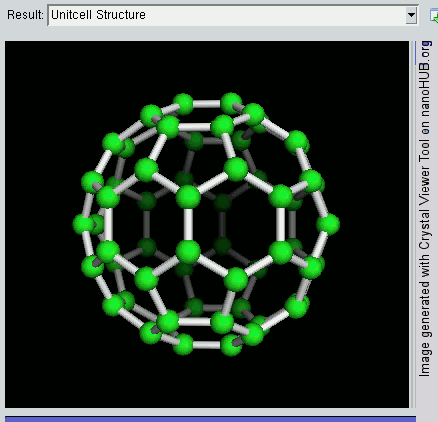|
Claes-Göran Granqvist
Claes-Göran Sture Granqvist (born 25 December 1946, Helsingborg, Sweden) is a materials physicist and Professor of Solid State Physics at Uppsala University in Sweden. Granqvist is considered a pioneer and expert in photochromic materials and energy-efficient building materials such as glass, paint, and wood. Granqvist is a Fellow of SPIE, the international society for optics and photonics and a Member of the Royal Swedish Academy of Science and the Royal Swedish Academy of Engineering Sciences. He has served as Chairman of the Nobel Committee for Physics of the Royal Swedish Academy of Sciences. Education Granqvist received the PhD degree in physics at Chalmers University of Technology, Gothenburg, Sweden, in 1974. Career In 1975, Granqvist was a Postdoctoral associate at Cornell University, USA. In the period of 1976–89, he held various research positions at Chalmers University of Technology. From 1989 to 1993 he was a Full Professor of Experimental Physics at Univer ... [...More Info...] [...Related Items...] OR: [Wikipedia] [Google] [Baidu] |
Helsingborg
Helsingborg (, , ), is a Urban areas in Sweden, city and the seat of Helsingborg Municipality, Scania County, Scania (Skåne), Sweden. It is the second-largest city in Scania (after Malmö) and List of urban areas in Sweden by population, ninth-largest in Sweden, with a population of 151,404 (2024). Helsingborg is the central urban area of northwestern Scania and Sweden's closest point to Denmark: the Danish city Helsingør is clearly visible about to the west on the other side of the Øresund. Historic Helsingborg, with its many old buildings, is a scenic coastal city. The buildings are a blend of old-style stone-built churches and a 600-year-old medieval fortress (Kärnan) in the city centre, and more modern commercial buildings. The streets vary from wide avenues to small alley-ways. ''Kullagatan'', the main pedestrian shopping street in the city, was the first pedestrian shopping street in Sweden. History Helsingborg is one of the oldest cities of what is now Sweden. It h ... [...More Info...] [...Related Items...] OR: [Wikipedia] [Google] [Baidu] |
SPIE
SPIE (formerly the Society of Photographic Instrumentation Engineers, later the Society of Photo-Optical Instrumentation Engineers) is an international not-for-profit professional society for optics and photonics technology, founded in 1955. It organizes technical conferences, trade exhibitions, and continuing education programs for researchers and developers in the light-based fields of physics, including: optics, photonics, and imaging engineering. The society publishes peer-reviewed scientific journals, conference proceedings, monographs, tutorial texts, field guides, and reference volumes in print and online. SPIE is especially well-known for Photonics West, one of the laser and photonics industry's largest combined conferences and tradeshows which is held annually in San Francisco. SPIE also participates as partners in leading educational initiatives, and in 2020, for example, provided more than $5.8 million in support of optics education and outreach programs around the ... [...More Info...] [...Related Items...] OR: [Wikipedia] [Google] [Baidu] |
Photocatalysis
In chemistry, photocatalysis is the acceleration of a photoreaction in the presence of a photocatalyst, the excited state of which "repeatedly interacts with the reaction partners forming reaction intermediates and regenerates itself after each cycle of such interactions." In many cases, the catalyst is a solid that upon irradiation with UV- or visible light generates electron–hole pairs that generate free radicals. Photocatalysts belong to three main groups; heterogeneous, homogeneous, and plasmonic antenna-reactor catalysts. The use of each catalysts depends on the preferred application and required catalysis reaction. History Early mentions (1911–1938) The earliest mention came in 1911, when German chemist Dr. Alexander Eibner integrated the concept in his research of the illumination of zinc oxide (ZnO) on the bleaching of the dark blue pigment, Prussian blue. Around this time, Bruner and Kozak published an article discussing the deterioration of oxalic acid in ... [...More Info...] [...Related Items...] OR: [Wikipedia] [Google] [Baidu] |
Biomimicry
Biomimetics or biomimicry is the emulation of the models, systems, and elements of nature for the purpose of solving complex human problems. The terms "biomimetics" and "biomimicry" are derived from (''bios''), life, and μίμησις ('' mīmēsis''), imitation, from μιμεῖσθαι (''mīmeisthai''), to imitate, from μῖμος (''mimos''), actor. A closely related field is bionics. Nature has gone through evolution over the 3.8 billion years since life is estimated to have appeared on the Earth. It has evolved species with high performance using commonly found materials. Surfaces of solids interact with other surfaces and the environment and derive the properties of materials. Biological materials are highly organized from the molecular to the nano-, micro-, and macroscales, often in a hierarchical manner with intricate nanoarchitecture that ultimately makes up a myriad of different functional elements. Properties of materials and surfaces result from a complex interpla ... [...More Info...] [...Related Items...] OR: [Wikipedia] [Google] [Baidu] |
Condensed Matter Physics
Condensed matter physics is the field of physics that deals with the macroscopic and microscopic physical properties of matter, especially the solid and liquid State of matter, phases, that arise from electromagnetic forces between atoms and electrons. More generally, the subject deals with condensed phases of matter: systems of many constituents with strong interactions among them. More exotic condensed phases include the superconductivity, superconducting phase exhibited by certain materials at extremely low cryogenic temperatures, the ferromagnetic and antiferromagnetic phases of Spin (physics), spins on crystal lattices of atoms, the Bose–Einstein condensates found in ultracold atomic systems, and liquid crystals. Condensed matter physicists seek to understand the behavior of these phases by experiments to measure various material properties, and by applying the physical laws of quantum mechanics, electromagnetism, statistical mechanics, and other theoretical physics, physic ... [...More Info...] [...Related Items...] OR: [Wikipedia] [Google] [Baidu] |
Smart Glass
Smart glass, also known as switchable glass, dynamic glass, and smart-tinting glass, is a type of glass that can change its optical properties, becoming opaque or tinted, in response to electrical or thermal signals. This can be used to prevent sunlight and heat from entering a building during hot days, improving energy efficiency. It can also be used to conveniently provide privacy or visibility to a room. There are two primary classifications of smart glass: active or passive. The most common active glass technologies used today are electrochromic, liquid crystal, and suspended particle devices (SPD). Thermochromic and photochromic are classified as passive technologies. When installed in the envelope of buildings, smart glass helps to create climate adaptive building shells, which benefits include things such as natural light adjustment, visual comfort, UV and infrared blocking, reduced energy use, thermal comfort, resistance to extreme weather conditions, and privacy. S ... [...More Info...] [...Related Items...] OR: [Wikipedia] [Google] [Baidu] |
Solar Panel
A solar panel is a device that converts sunlight into electricity by using photovoltaic (PV) cells. PV cells are made of materials that produce excited electrons when exposed to light. These electrons flow through a circuit and produce direct current (DC) electricity, which can be used to power various devices or be stored in battery (electricity), batteries. Solar panels are also known as solar cell panels, solar electric panels, or PV modules. Solar panels are usually arranged in groups called arrays or systems. A photovoltaic system consists of one or more solar panels, an solar inverter, inverter that converts DC electricity to alternating current (AC) electricity, and sometimes other components such as charge controller, controllers, Measuring instrument, meters, and solar tracker, trackers. Most panels are in solar farms or Rooftop solar power, rooftop solar panels which grid-connected photovoltaic system, supply the electricity grid. Some advantages of solar panels are ... [...More Info...] [...Related Items...] OR: [Wikipedia] [Google] [Baidu] |
Solar Cell
A solar cell, also known as a photovoltaic cell (PV cell), is an electronic device that converts the energy of light directly into electricity by means of the photovoltaic effect.Solar Cells chemistryexplained.com It is a type of photoelectric cell, a device whose electrical characteristics (such as Electric current, current, voltage, or Electrical resistance and conductance, resistance) vary when it is exposed to light. Individual solar cell devices are often the electrical building blocks of solar panel, photovoltaic modules, known colloquially as "solar panels". Almost all commercial PV cells consist of crystalline silicon, with a market share of 95%. Cadmium telluride thin-film solar cells account for the remainder. The common single-junction silicon solar cell can produce a maximum open-circuit voltage o ... [...More Info...] [...Related Items...] OR: [Wikipedia] [Google] [Baidu] |
Solar Energy
Solar energy is the radiant energy from the Sun's sunlight, light and heat, which can be harnessed using a range of technologies such as solar electricity, solar thermal energy (including solar water heating) and solar architecture. It is an essential source of renewable energy, and its technologies are broadly characterized as either passive solar or active solar depending on how they capture and distribute solar energy or convert it into solar power. Active solar techniques include the use of photovoltaic systems, concentrated solar power, and solar water heating to harness the energy. Passive solar techniques include designing a building for better daylighting (architecture), daylighting, selecting materials with favorable thermal mass or light-dispersing properties, and organizing spaces that ventilation (architecture), naturally circulate air. In 2011, the International Energy Agency said that "the development of affordable, inexhaustible and clean solar energy technolo ... [...More Info...] [...Related Items...] OR: [Wikipedia] [Google] [Baidu] |
Green Nanotechnology
Green nanotechnology refers to the use of nanotechnology to enhance the environmental sustainability of processes producing negative externalities. It also refers to the use of the products of nanotechnology to enhance sustainability. It includes making green nano-products and using nano-products in support of sustainability. The word GREEN in the name Green Nanotechnology has dual meaning. On one hand it describes the environment friendly technologies utilized to synthesize particles in nano scale; on the other hand it refers to the nanoparticles synthesis mediated by extracts of chlorophyllus plants. Green nanotechnology has been described as the development of clean technologies, "to minimize potential environmental and human health risks associated with the manufacture and use of nanotechnology products. It also encourages replacement of existing products with new nano-products that are more environmentally friendly throughout their lifecycle." Aim Green nanotechnology has ... [...More Info...] [...Related Items...] OR: [Wikipedia] [Google] [Baidu] |
Nanomaterials
Nanomaterials describe, in principle, chemical substances or materials of which a single unit is sized (in at least one dimension) between 1 and 100 nm (the usual definition of nanoscale). Nanomaterials research takes a materials science-based approach to nanotechnology, leveraging advances in materials metrology and synthesis which have been developed in support of microfabrication research. Materials with structure at the nanoscale often have unique optical, electronic, thermo-physical or mechanical properties. Nanomaterials are slowly becoming commercialized and beginning to emerge as commodities. Definition In ISO/TS 80004, ''nanomaterial'' is defined as the "material with any external dimension in the nanoscale or having internal structure or surface structure in the nanoscale", with ''nanoscale'' defined as the "length range approximately from 1 nm to 100 nm". This includes both ''nano-objects'', which are discrete pieces of material, and ''nanostructu ... [...More Info...] [...Related Items...] OR: [Wikipedia] [Google] [Baidu] |
Cornell University
Cornell University is a Private university, private Ivy League research university based in Ithaca, New York, United States. The university was co-founded by American philanthropist Ezra Cornell and historian and educator Andrew Dickson White in 1865. Since its founding, Cornell University has been a Mixed-sex education, co-educational and nonsectarian institution. As of fall 2024, the student body included 16,128 undergraduate and 10,665 graduate students from all 50 U.S. states and 130 countries. The university is organized into eight Undergraduate education, undergraduate colleges and seven Postgraduate education, graduate divisions on its main Ithaca campus. Each college and academic division has near autonomy in defining its respective admission standards and academic curriculum. In addition to its primary campus in Ithaca, Cornell University administers three satellite campuses, including two in New York City, the Weill Cornell Medicine, medical school and ... [...More Info...] [...Related Items...] OR: [Wikipedia] [Google] [Baidu] |





